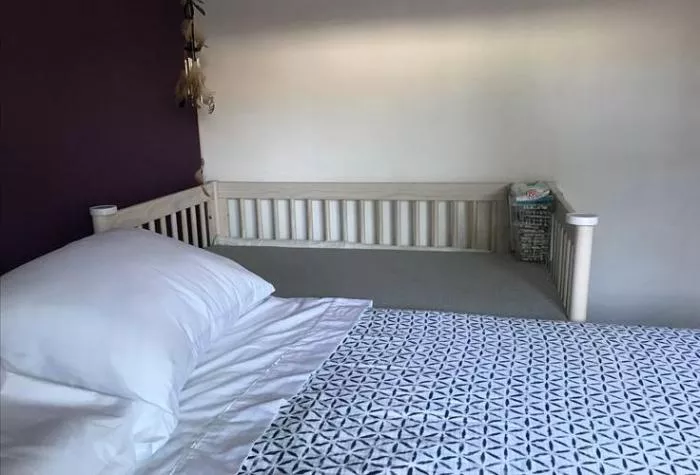As new parents, one of the most important decisions you will make is where your baby will sleep. With so many options available, sidecar cribs have gained popularity as a practical choice. This article explores the safety of sidecar cribs, their benefits, and considerations for parents.
What is a Sidecar Crib?
A sidecar crib is a small crib that attaches to the side of a parent’s bed. It allows the baby to sleep close to the parents while having their own safe sleeping space. Sidecar cribs typically have one side that is open, which can be pushed up against the parents’ bed.
These cribs are designed to be at the same height as the adult mattress. This design makes it easy for parents to reach over and tend to their baby during the night. They are a popular option for parents who want to co-sleep safely without sharing the same sleep surface.
Benefits of Sidecar Cribs
Promotes Bonding
Having your baby close by during the night can strengthen the parent-child bond. Sidecar cribs make it easy for parents to comfort their baby without getting out of bed.
Easier Nighttime Feedings
If you are breastfeeding, a sidecar crib can make nighttime feedings easier. You can simply reach over to your baby without having to fully wake up or get out of bed.
Safety
Sidecar cribs can be a safer option compared to traditional co-sleeping. They provide a separate sleeping space for the baby, reducing the risk of suffocation or rolling over onto the baby.
Reduced Risk of SIDS
The American Academy of Pediatrics (AAP) recommends that infants sleep in the same room as their parents for at least the first six months. A sidecar crib allows parents to keep their baby close while following safe sleep guidelines.
Safety Considerations for Sidecar Cribs
While sidecar cribs offer many benefits, it is important to consider safety guidelines to ensure a secure sleeping environment for your baby.
Proper Installation
Ensure that the sidecar crib is securely attached to your bed. Check that there are no gaps between the crib and your mattress where the baby could get stuck. Follow the manufacturer’s instructions for installation carefully.
Stable and Sturdy Construction
Choose a sidecar crib made from high-quality materials. It should be stable and sturdy to prevent tipping or collapsing. Check for any recalls or safety warnings on the crib model you choose.
Appropriate Mattress Size
Make sure the mattress in the sidecar crib fits snugly. A mattress that is too small can create gaps, posing a risk of entrapment. The AAP recommends that cribs use a firm mattress covered with a fitted sheet.
Avoid Soft Bedding
Do not use soft bedding, pillows, or blankets in the sidecar crib. These items can increase the risk of suffocation. Dress your baby in appropriate sleep clothing, such as a sleep sack.
Monitor Baby’s Sleep Position
Always place your baby on their back to sleep, as recommended by the AAP. This sleep position reduces the risk of sudden infant death syndrome (SIDS).
Co-Sleeping vs. Sidecar Cribs
Many parents wonder about the differences between co-sleeping and using a sidecar crib. While both methods allow parents to keep their baby close, there are key distinctions.
Co-Sleeping
Co-sleeping refers to sharing the same sleep surface as your baby. This can be done in a bed or on a couch. While it promotes bonding and ease of nighttime feedings, co-sleeping carries certain risks. The chances of accidental suffocation or falls increase when the baby sleeps on the same surface as adults.
Sidecar Cribs
Using a sidecar crib allows the baby to sleep in their own space. This arrangement reduces the risks associated with co-sleeping while still keeping the baby close. Parents can easily tend to their baby without the dangers of sharing a mattress.
Choosing the Right Sidecar Crib
When selecting a sidecar crib, consider the following factors:
Safety Standards
Ensure that the crib meets safety standards set by organizations such as the Consumer Product Safety Commission (CPSC). Look for cribs that comply with the latest safety regulations.
Size and Compatibility
Check the size of the crib to ensure it fits snugly against your bed. Some cribs may be adjustable in height, which is beneficial for achieving a secure fit.
Ease of Use
Consider how easy it is to access your baby in the crib. A crib with a drop-down side can make it easier for nighttime feedings and comforting.
Portability
If you plan to travel, consider a portable sidecar crib. Some models are designed for easy transport, allowing you to keep your baby close wherever you go.
Tips for Safe Sleep Practices with Sidecar Cribs
In addition to choosing a safe sidecar crib, follow these tips for promoting safe sleep practices:
Room Sharing
Share your bedroom with your baby for at least the first six months. This arrangement can help reduce the risk of SIDS and make nighttime care more convenient.
Regularly Check the Crib
Periodically inspect the sidecar crib for any loose screws, wear, or damage. Regular maintenance helps ensure that the crib remains a safe sleeping environment.
Create a Safe Sleep Environment
Keep the sleep environment free from hazards. Remove any cords, strings, or other items that could pose a risk. Ensure that the crib is away from windows and drapes.
Educate Caregivers
If other caregivers will be watching your baby, make sure they understand safe sleep practices. Share guidelines for using the sidecar crib to ensure consistency.
Conclusion
Sidecar cribs can be a safe and practical choice for parents who want to keep their baby close while promoting safe sleep practices. By ensuring proper installation, choosing high-quality materials, and following safety guidelines, parents can create a secure sleeping environment for their little ones.
Always prioritize safe sleep practices and consult with your pediatrician if you have any concerns about your baby’s sleeping arrangements. With the right precautions, a sidecar crib can offer peace of mind and convenience for new parents.
Related topics:



